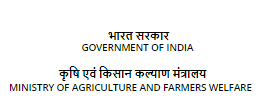ICAR-CIAE Economic Seeder
Background:
Rice is one of the main grains in India. Manual harvesting of paddy crops is a traditional practice that is also time-consuming. Under mechanization practice, a combine harvester leaves a significant length of loose straw and stubble in the field. Thus, paddy straw management in combined harvested paddy fields is a major problem in paddy-wheat rotation. Burning paddy straw is preferred by 60-70 percent of farmers as a quick and easy method of disposing of paddy residue. This enables the farmers to plant the next wheat crop on time. Machines for simultaneous chopping and mixing of plant residue in the soil and sowing the seeds are available in India, but they are costly, heavy, and require a high-horsepower tractor. These machines also lack the facility to operate independently.:
It is well known that the rotavator is the most popular seedbed preparation implement and is easily available to farmers, but it does not cut and properly mix the highly dense stubble left over by the combine harvester in a single pass. So, there is a need for an implement that should be an attachment to the rotavator, be light in weight, have less vibration, require less power, and be much cheaper as compared to the existing implement, and perform the task like the commercially available in-situ stubble management machines:
Technology Details:
The CIAE Economy Seeder is an in-situ crop residue management technology in which the three operations: chopping of the residue, tilling the soil and mixing the chopped residue, and seeding-can be done simultaneously. The chopping and seeding unit are an additional attachment to any commercially available rotavator. The equipment is fabricated in such a way that either all three operations can be done in a single pass or, in a quick detachment and attachment process, residue chopping, rotary tilling, and seeding can be done independently as separate operations with independent equipment. The machine has been evaluated in vertisols in combine-harvested paddy residue, wheat residue, a field with standing maize plant residue, and also in okra residue. Sowing of Bengal gram has been done in the standing maize residue, while sowing of wheat has been done in the okra and rice residue. The performance of the CIAE economy seeder has also been compared with existing straw incorporation machines such as the super seeder, mulcher integrated with a rotavator, and rotavator in a combine harvested paddy field. All machines are evaluated on the parameters of mixing index (MI), pulverization index (PI), or mean weight diameter (MWD), bulk density at 3 km/h forward speed, and 17% straw moisture. The actual field capacity of an economy seeder is 0.24 ha/h at a field efficiency of 80%. The pulverization index of the super seeder, mulcher integrated with rotavator, rotavator alone, and CIAE economy seeder are 9, 8.6, 10.2, and 8.4 mm, respectively, whereas the mixing index is 85.2, 91.2, 28.4, and 96.6%, respectively.


